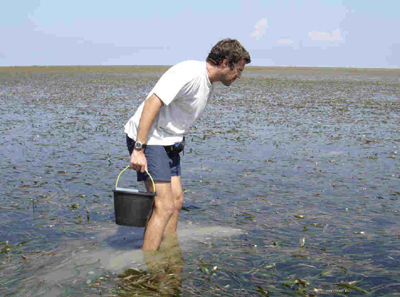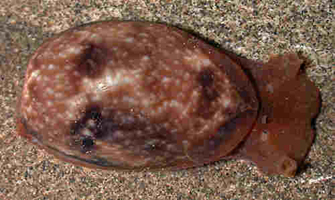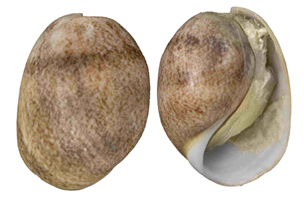

Manuel António E. Malaquias
Bergen Museum, University of Bergen, Muséplass 3, N-5007, Bergen, Norway
(Manu...@bm.uib.no / mmal...@museus.ul.pt)
During the 2001 World Congress of Malacology in Vienna, Austria I asked David Reid, who I knew well from two previous visits to the Natural History Museum, London (NHM; 1997 and 2001), to supervise my PhD on the systematics of the Bullidae, a shelled group of opisthobranch molluscs. At the time I was still doing my MSc project but the opportunity to work at a leading natural history museum with a leading scientist was a dream that had hung over me for quite a long time. I was determined to make it happen! David embraced the idea enthusiastically, and as soon as I got back to Portugal I started writing the proposal. After some emails back and forth between the Algarve and London the proposal was finally ready, and what had started as a purely systematic work was transformed on a broader project designed not only to revise the systematics of this family but also to look at its origin, speciation and biogeography. All very exiting. but funds to make the dream possible were still to be clinched! Early in 2002 the proposal was submitted to FCT (the Portuguese funding body for science and technology) and by late spring the good news arrived - a four-year PhD grant was approved to fund my salary, academic and research fees!
During my four years as a PhD student at the NHM I had great opportunities to travel the world collecting specimens in places such as Senegal, India, Philippines, East Timor, etc., and also to look at collections in several of the major natural history museums of the world, from New York to Sydney. These, together with the fantastic collections, facilities, and intellectual environment at the NHM offered an exceptional opportunity to develop a very exiting project investigating aspects of the systematics, phylogeny, speciation, biogeography, and ecology of "my" bubble-shells. The systematic revision based on shells, anatomy, and molecular markers revealed the existence of 12 species worldwide including an undescribed species. The previous taxonomic scenario, based almost solely on shell characters was very confused and recognized over 100 species! |
 |
| Fig. 3. the author searching for snails at a massive seagrass meadow in southwestern Sulawesi, Indonesia (August 2005) |
A sound hypothesis of the systematics of Bullidae coupled with a molecular phylogeny, detailed knowledge of the geographic distribution of each species assembled from museum collections, and knowledge of the fossil record, offered the possibility to explore in depth several exciting questions related to the origin and speciation of the group. These, in turn, could contribute to our understanding of the driving forces of speciation in the marine realm at a broader scale. I found that Bullidae has a Middle Eocene origin in the eastern Tethys Sea and that all extant species speciated during the Oligocene-Miocene; the Plio-Pleistocene eustasy did not promote speciation in the group. Vicariant events such as the closure of the Tethys Sea and the uplift of the Isthmus of Panama shaped the deep phylogenetic structure of Bullidae resulting in Indo-West Pacific and Atlantic clades, but the formation of extant species is the result of long-distance dispersal, peripheral isolation and habitat specialization.
In 2004, I was invited by Philippe Bouchet from the Natural History Museum of Paris to participate in the Panglao Marine Biodiversity Project in the Philippines. A fantastic assemblage of cephalaspid opisthobranchs was collected, and this gave me immediately the idea to work on a comprehensive molecular hypothesis of this order of gastropods (I should say here that cephalaspids are at the heart of my research interests). If I could get it done, I then might well be able to map the diet of all genera and families onto the phylogeny and see how dietary specialization influenced the diversification of cephalaspideans. This phylogenetic analysis produced several interesting results, but one of the most remarkable, that changed our view about the definition and relationships of the Cephalaspidea, was the fact that the small runcinids (Runcinidae) did not cluster within the cephalaspids but instead, against the prevalent view formed their own monophyletic evolutionary lineage.
Mapping diets onto a phylogeny imply, obviously, knowledge of the food preferences of all groups. In general, this is relatively well known within the Cephalaspidea, but for Bullidae there were contradictory data with claims of herbivory, carnivory, and omnivory. The only way to unravel the true was reassessing the diet of the group looking at gut contents from worldwide species of various habitats. Using fine anatomical dissection techniques, light and scanning electron microscopy was possible to determine that Bullidae feed preferentially on algae and secondarily on diatoms. Herbivory was found to be the plesiomorphic condition within the Cephalaspidea, with carnivory having arisen independently two or three times.
The dissemination of results of this doctoral project (October 2002- January 2007) is still ongoing. So far five papers have been submitted, of which four were accepted (Malaquias & Reid. 2008. Zooogical Journal of the Linnean Society, 153:453-543; Malaquias & Reid. 2008. Acta Zoologica, 89: 205-210; Malaquias et al. in press. Zoologica Scripta; Malaquias et al. in press. Journal of Zoology), and one is presently under review (Malaquias & Reid. Journal of Biogeography).
 |
 |
| Fig. 1. Bulla vernicosa Gould 1859; Hawaii; shell length=25mm (courtesy: Cory Pittman). | Fig. 2. Bulla arabica Malaquias & Reid, 2008; United Arab Emirates; shell length=39mm. |